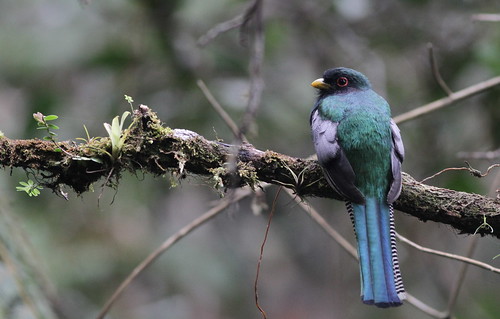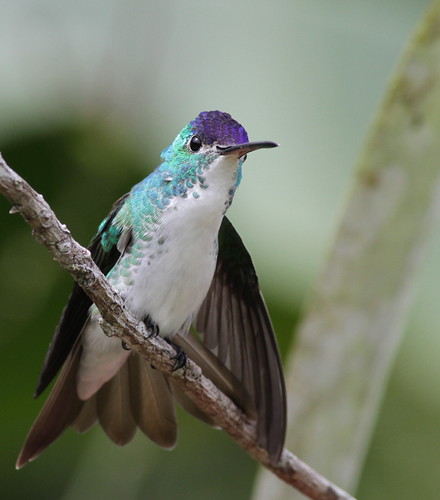Bus to Piha reserve

Masked Trogon, Piha Reserve
The Piha reserve is located near Medellín, a few hours away by bus. Of course, Medellín is 13 hours away from Bogotá, so off we went. Now, by this point in time I had spent over 250 hours on buses in Latin America, over 10 days of my life. Andrew was somewhere up around 5 weeks of his life on buses, so he had me beat by a long shot. However, both of us were mildly horrified by the driver of our bus to Medellín. The drive takes you down the west slope of the eastern range of the Andes in Colombia, and then across the dry Magdalena Valley, and back up the east slope of the western range of the Andes, where Medellín sits. Our driver was relatively tame on the initial descent, not going too fast, but once we hit the flat land and straightaways of the valley, all bets were off. Most of the next 5-6 hours were spent in excess of 80 miles an hour, with the speedometer of the bus maxed out at 130kph. The best part is that buses are required by law to have a speed limiter where they can't exceed 80 kilometers an hour, so of course they all just disable the limiter somehow! The limiter is a black box with a digital readout that all the passengers can see, that sits above the rear view mirror. During out trip, some limiters would just be unplugged and be hanging loosely from wires, some would permanently read zero, and some worked, but just let the bus go over 80kph anyways.

Andean Emerald, Piha Reserve
Anyways, we reached Medellín at 11pm, alive, and asked a taxi driver for a good but cheap hotel, where we were soon asleep. Next morning back to the bus terminal early, where we hopped on our bus to the Piha reserve. The Piha reserve was a great place, with good trails, food, and accommodations. The time of year that we were there seemed like it might have been a low point for song activity, most of our targets seemed conspicuously silent, either never heard singing spontaneously, or in the case of the piha itself, heard only once. My personal favorite bird of this location was a stunning male Multicolored Tanager, our only target bird left on our last morning there, and we lucked into one in a flock when we were heading back down from the ridge trail. We had the most birding luck along the ridge trail, especially with mixed flocks. Other highlights included Red-bellied Grackle, the Chestnut-capped Piha, amazing encounters with Purplish-mantled Tanager, Parker's Antbird, and Black-and-Gold Tanagers.
After a couple days there we had to retrace our steps back to Medellín, and then hop on another bus to Urrao, a town where we would base out of to go to the Colibrí del Sol reserve, and where I will be writing about next.


No comments:
Post a Comment